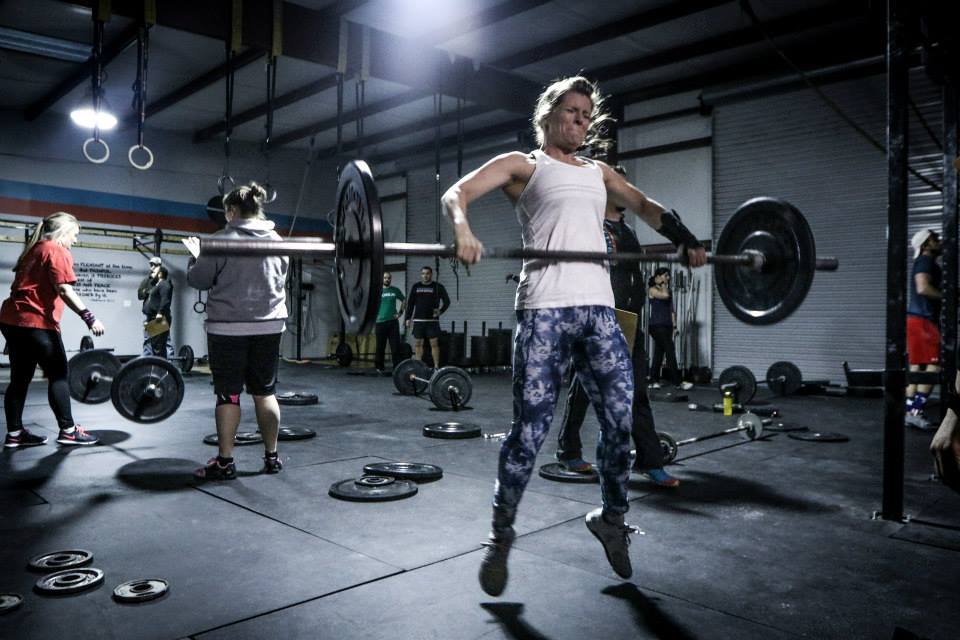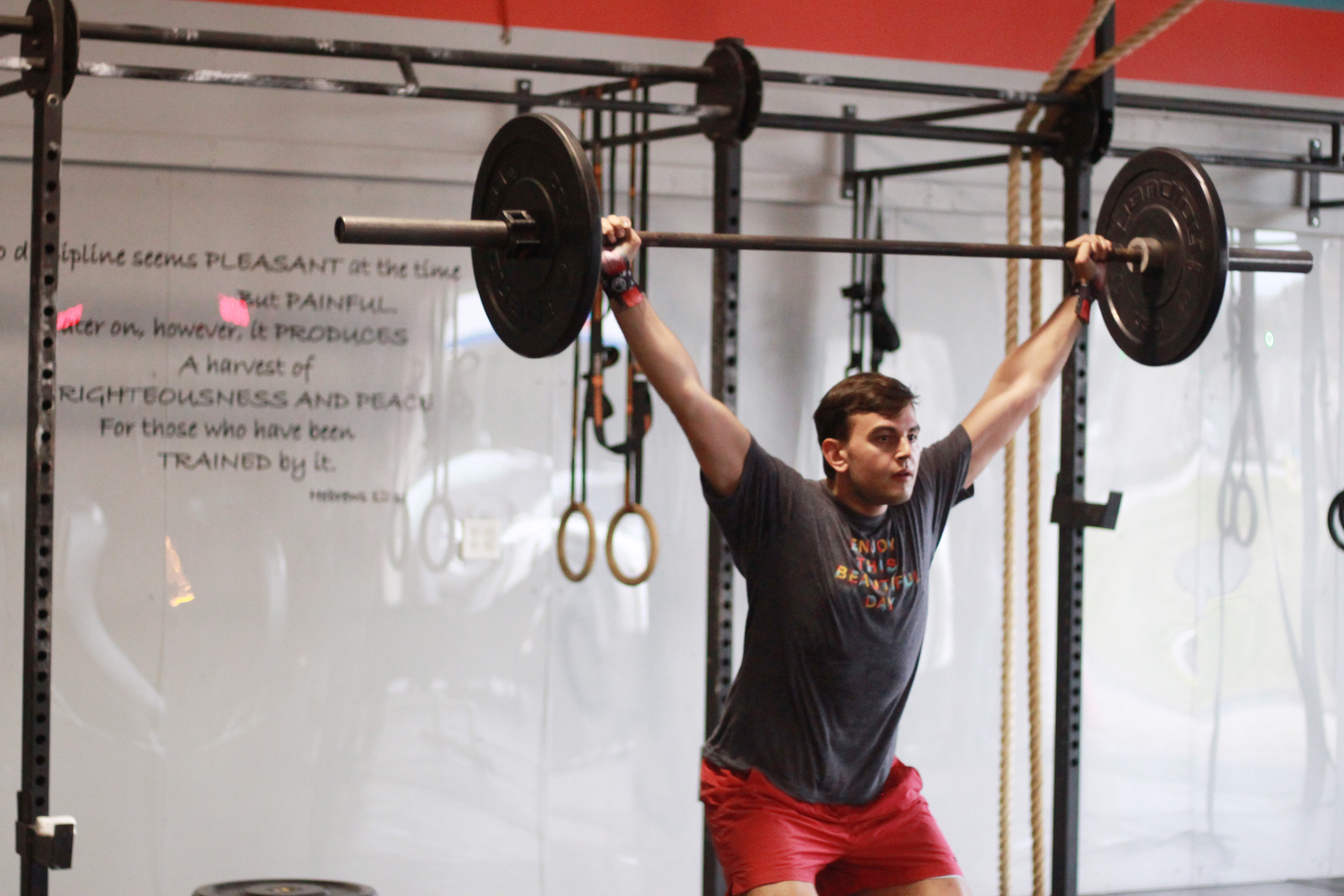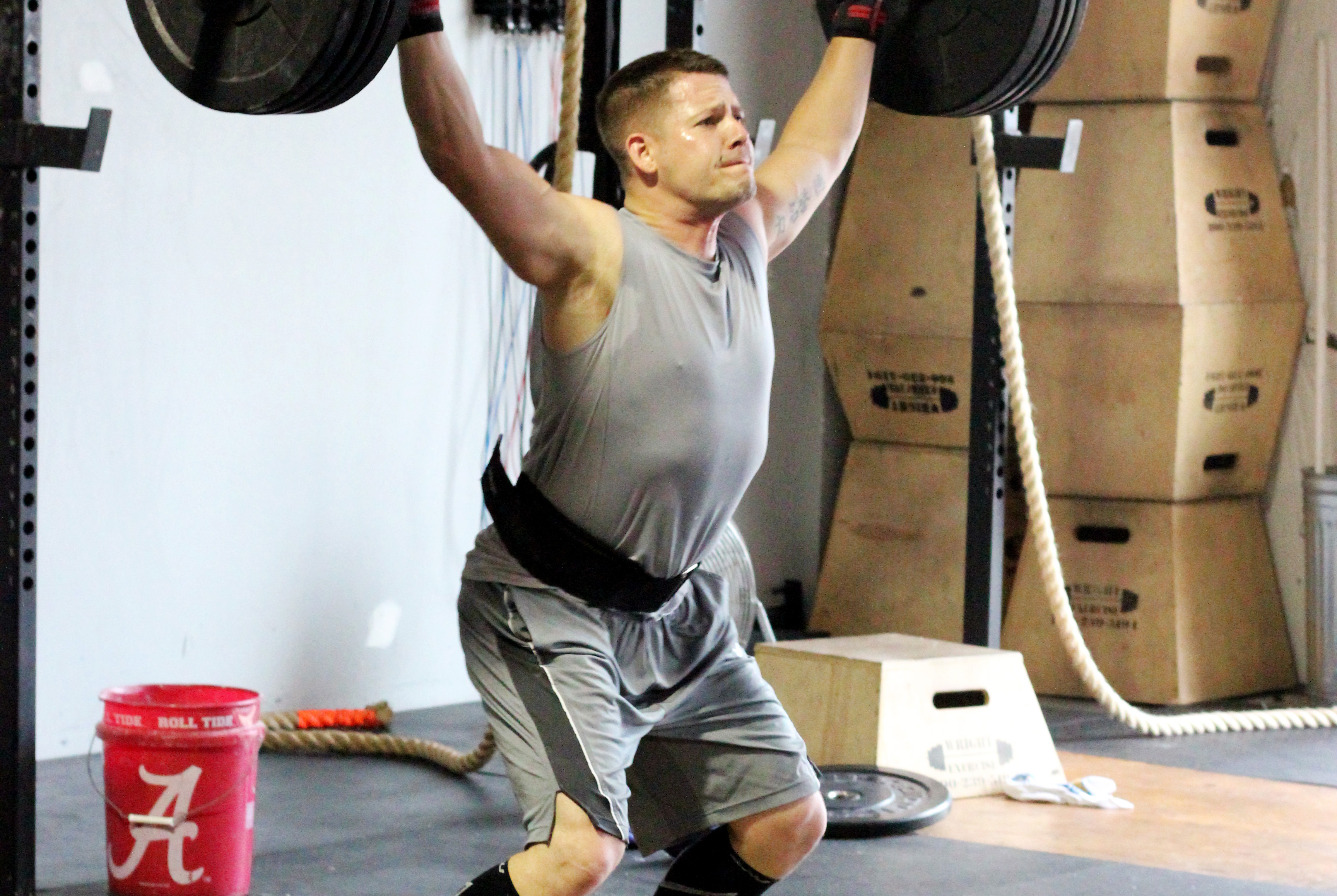
The snatch lift seems to get quite the reputation among CrossFitters.
In fact, every time it shows up in my gym’s programming, the athletes are immediately divided into two camps — those who love snatches and those who would rather peel off their toenails than spend twenty minutes falling on their rump while doing this lift.
Luckily, I fall in the first camp. I LOVE to snatch. The combination of balance, power, and explosiveness make this lift a special favorite of mine.
However, there are a lot of technical aspects to the snatch that can make it difficult for some athletes. To improve your snatch lift, you must first figure out what part of the lift is giving you trouble.
What is a Snatch?
So first of all, let’s go over what a proper snatch should look like.
There are a few different ways to perform a snatch. A regular snatch, sometimes called a squat snatch, starts at the floor with your hands in a wide grip on the bar. Your feet should be shoulder-width apart and your weight should be back on your heels, with your shoulders behind the bar.
When you begin this lift, you will first pull the bar to your hips, keeping it in the front body plane. This is one of two pulls in the snatch and it should be the slower one of the two.
Once you hit the hip pocket (quite literally — some athletes bang the bar off of their hips), you should explode from the hips and drop underneath the bar into a full squat position with your arms locked out overhead before standing the bar back up. Congratulations, you have completed a proper snatch.
Another type of snatch is the power snatch. It is similar to the regular snatch, but involves pulling the bar from the ground directly overhead without squatting underneath it.
You can also snatch from the hang position or the high hang position, both with and without a squat underneath the bar.
10 Ways to Improve Your Snatch Lift
1. Work on Shoulder Mobility. This movement can be particular difficult for people who don’t have flexibility in their shoulders as well as the ankles. If you know that a snatch lift is coming up in your daily programming, take the extra time to work on stretching out your ankles and shoulders before attempting a lift.
Some great ways to warm up your shoulders are exercises using a PVC pipe such as pass throughs and overhead squats. Another awesome way to get ready for snatches in particular is the Burgener warmup.
2. Make Sure You’re Warmed Up. The snatch lift uses every part of your body — your shoulders, your arms, your legs, your hips, your ankles, your feet and your core.
Make sure you’re taking the time to stretch out and warm up all these different body parts before attempting heavy snatches. Nothing will land you on your butt faster than stiff hips or creaky knees.
3. Slow Down Your Pull. A snatch consists of three pulls — the pull from the ground to the hang position, the pull from the hang position overhead and the pull to get underneath the bar.
One of the most common issues people run into with snatches is completing the first pull too quickly. Forget that pull even exists. In your head, think in terms of your lift not beginning until you hit the hang position. That is when your lift should become explosive.
4. Use Your Hips to Extend. One of the best feelings is when you’ve started to feel really comfortable with the snatch lift and you can isolate the movements as you do them.
Whether or not you’ve gotten to that point, you need to make sure you’re using your hips. When doing a snatch lift, there is actually a split second when your hip explosion will be so…well, explosive, that it will lift your feet up off the ground. That airless moment is when you transition underneath the bar into the squat or power position.

5. USE YOUR LEGS. Repeat after me — I will not muscle snatch a bar I am trying to power or squat snatch. In all seriousness though, snatches should wreak the most havoc on your legs.
If you’re only feeling this lift in your arms, you are doing yourself a disservice and I guarantee you can lift more than you realize. The lift should come from the hips and everything else should follow. #StopMuscleSnatches2016
6. Drop Under the Bar. This follows closely in line with number 5. GET UNDER THE DANG BAR. Whether you’re doing a squat snatch or a power snatch, you will be more successful and lift heavier if you receive the bar in a squat or slightly squatted position and then stand it up. 

7. Study Up on Form. Sometimes in order to really get a movement, you have to study it for a while. That might mean practicing with light weight over and over again until you’re more comfortable going heavy.
It might also mean watching videos of yourself or of other people performing snatches to understand where your mistakes are or how you should look. Both Rogue and Rokform offer great products for recording yourself in the gym and there are literally hundreds of videos on Youtube of proper snatch form like this one featuring Games athlete Mat Fraser.
8. Keep the Bar in the Frontal Plane. The heavier your snatch lift gets, the more you have to fight the impulse to swing the bar wide outside of your body to get it overhead.
Don’t do this. Although it sometimes is your body’s natural instinct, it actually makes the load heavier and more difficult to lift. Keep the bar close to your body and explode upwards. 

9. Resist the Urge to Do the Splitz. Remember how I told you earlier that your feet come off the ground during a snatch and you thought I was crazy?
How else then can you explain ending up with your legs splayed out below you like you’re stanky legging your way through a lift?
When you’re snatching heavy weight, people tend to overspread their legs to create an illusion of more stability. However, if anything, this compromises your snatch lift stability. Keep your legs underneath you approximately shoulder-width apart when you land for maximum stability in your lift.
10. Get Comfortable With Weight Overhead. For people on the other end of the shoulder mobility spectrum — those like me who have entirely too much shoulder flexibility but lack stability — throwing weight over your head can be really intimidating.
We have no problem getting a bar over our heads, but sometimes we have problems stabilizing it there and run the risks of extending our shoulders too far, which sort of feels like we’re going to flip over backwards, drop the bar on our heads, and/or rip our shoulders out of socket.
Turns out, these are pretty legitimate risks. Therefore, practice movements like overhead squats or simply carrying a bar loaded with light weight over your head around the gym. The more comfortable you get with weight over your head, the less likely you are to shy away when you’re working towards a new PR.
